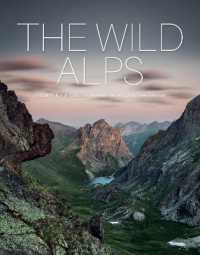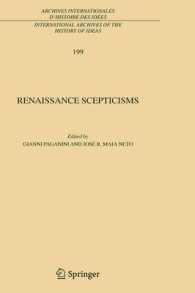Full Description
'Merges research-based Retrospective Miscue Analysis with adapted Socratic Circle discussions, thus empowering all elementary readers to collaboratively identify and verbalize reading strategies, individually experience ownership and control as readers, and effectively build both literacy and language confidence and competence within a united classroom community' - Marjorie R. Hancock, Professor Emerita of Elementary EducationKansas State UniversityHow can teachers ensure that each child becomes a better reader? Building Classroom Reading Communities presents a successful approach for motivating students as individual readers while encouraging peer-to-peer learning. By showing how to use Retrospective Miscue Analysis (RMA) and Socratic Circles together, the authors help teachers create a sense of community in the classroom and promote achievement for every student.The authors show how RMA-which develops students' comprehension and fluency by analyzing their mistakes as they read aloud-can be used to provide a window into each student's progress. The interactive discussion techniques used in Socratic Circles then extend learning in small groups and classwide. Teachers, literacy coaches, and others will find:- Assessment strategies and step-by-step guidance to implementing RMA and Socratic Circles- Insights on improving student skills in vocabulary, language structure, comprehension, and other key areas- Flexible, adaptable techniques for readers of all abilities- Numerous vignettes showing the use of RMA with Socratic Circles in the classroom.
Contents
List of FiguresForeword by Dorothy WatsonPrefaceAcknowledgmentsAbout the Authors1. Revaluing Readers: Introducing Retrospective Miscue Analysis (RMA)2. RMA and the Theoretical Premises Involved3. Connecting the Reading Process to Miscue Analysis4. Marking and Coding Miscues for RMA: Simplifying the Process for Classroom Teachers5. Organizing the Classroom for RMA6. Assessing Reading Performance Through RMA7. Informing Instruction Through RMA8. RMA Conversations Focus the Classroom Literacy Curriculum9. Socratic Circles and RMA10. RMA and Proficient Readers11. RMA and Developing Readers12. RMA and Striving Readers13. Concluding Thoughts and Follow-Up InterviewsResourcesResource A: A Summary of the ResearchResource B: Example of a Marked TranscriptResource C: Retelling Guide for Narrative TextResource D: Retelling Guide for Expository TextResource E: Practice Text for Miscue MarkingResource F: Focusing on Miscues: For Student ReferenceResource G: Reporducible Simplified Miscue OrganizerResource H: Burke Reading InterviewResource I: Thinking About Reading: Reproducible SurveyResource J: Socratic Circles Reproducible Tracking SheetReferences and ResourcesReferences for Children's LiteratureIndex
-

- 和書
- 変な絵 4
-

- 電子書籍
- 蜜恋絵巻~快感たいむすりっぷ~ 7 マ…





